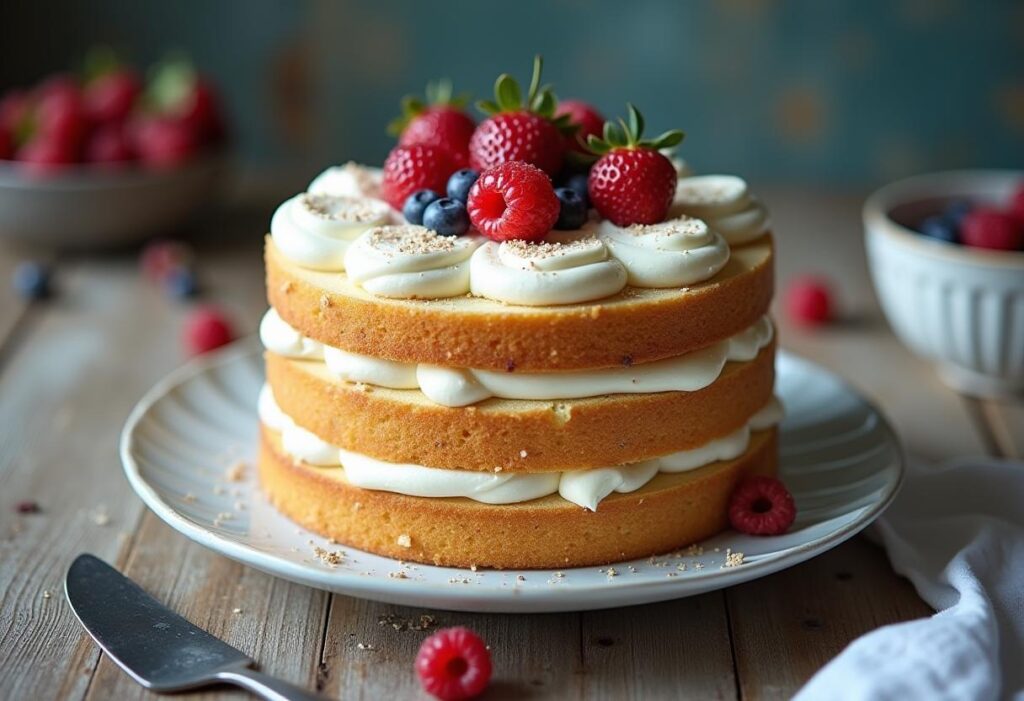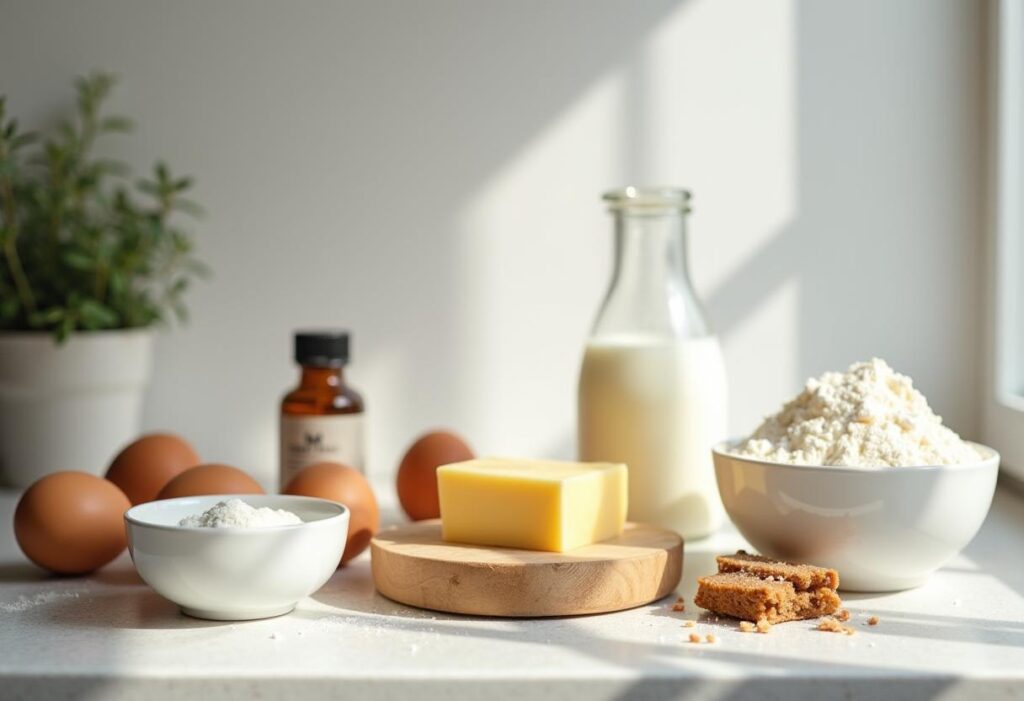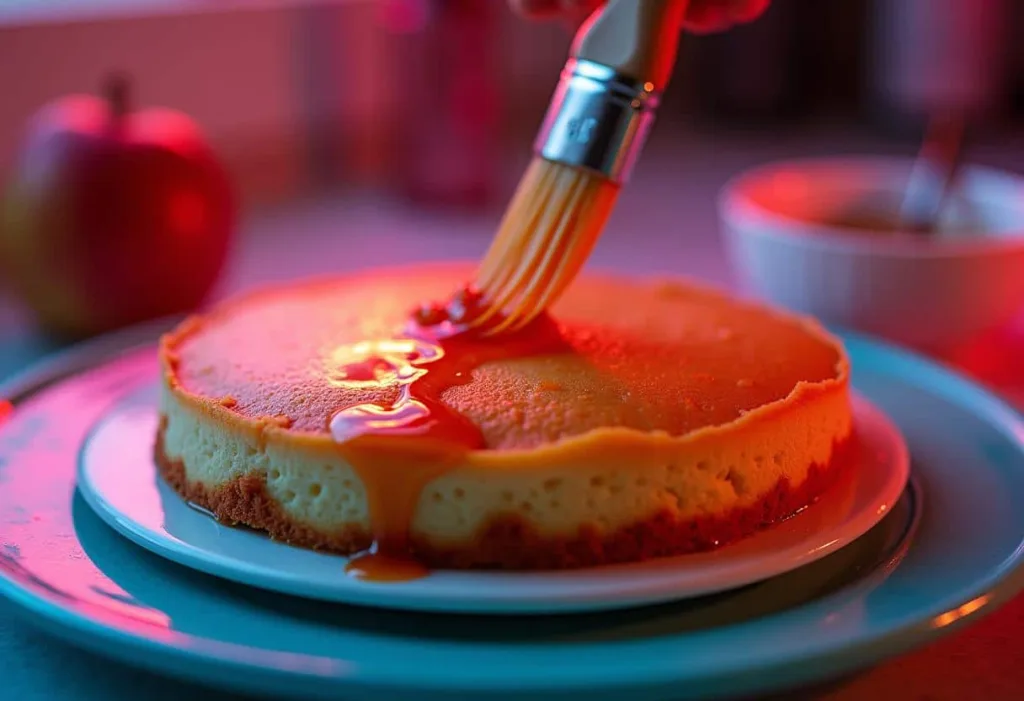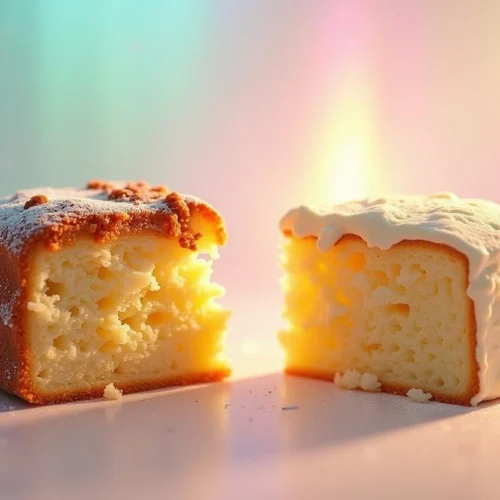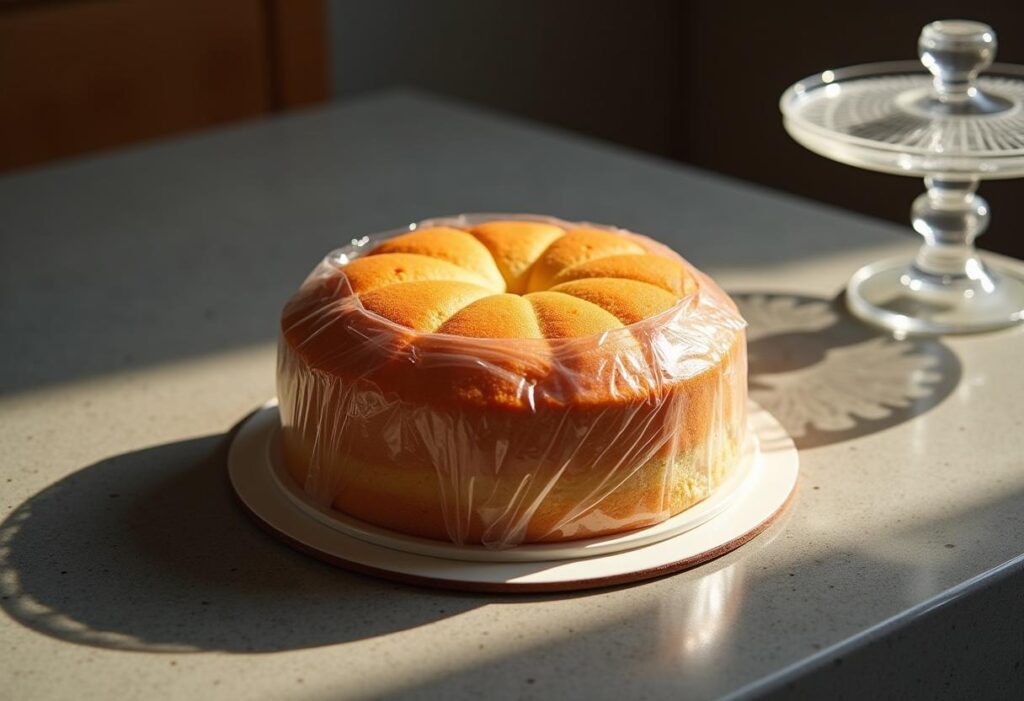Okay, amici, let’s talk real kitchen talk. Is there anything more heartbreaking than pulling a beautiful cake out of the oven, only to find it’s… well, kinda dry? Ugh, the worst! Even my chatterbox daughter, who usually inhales anything sweet, gets that disappointed look. Whether you’re baking for a birthday bash or just because it’s Tuesday (which is reason enough for cake, right?), nobody wants a crumbly, sad cake. So, how do we banish the dryness and achieve that perfect, dreamy texture? How do we make cake moist and fluffy every single time?
Don’t you worry, I’ve got your back! It’s not some impossible baking mystery. It’s about understanding your ingredients, nailing a few key techniques, and adding that little sprinkle of love Nonna always talked about. Stick with me, and we’ll turn those cake dreams into delicious reality. Get ready to bake the most tender, cloud-like cake of your life!
Ingredient Breakdown
Alright, let’s peek into the pantry! Getting that perfect moist and fluffy cake texture starts right here, with the ingredients. Each one has a job to do, like little players in our delicious orchestra. Knowing what they do helps you make smart choices (and maybe even become a pantry wizard like yours truly!).
Key Ingredients for Moisture and Fluffiness
- Flour
- Its Job: Gives the cake its backbone, the structure.
- My Two Cents: Cake flour really does make a difference if you want super tender. It has less protein than All-Purpose (AP), meaning less gluten development, which equals a softer bite. Worth it for special cakes!
- Quick Swap: No cake flour? No problem! For 1 cup, measure 1 cup of AP flour, remove 2 tablespoons, and add 2 tablespoons of cornstarch. Sift it together, and voilà!
- Sugar
- Its Job: Sweetness, obviously! But it’s also a moisture magnet, helping keep things tender.
- My Two Cents: Granulated sugar is standard. Brown sugar adds extra moisture (thanks, molasses!) and a lovely caramel note. Sometimes I use a mix!
- Quick Swap: You can use honey or maple syrup, but they add liquid and flavor, so you might need to adjust other liquids slightly. Experiment carefully!
- Eggs
- Their Job: Binders extraordinaire! They hold things together and add richness. Plus, whipping them traps air, making things fluffy.
- My Two Cents: Room temperature eggs are a MUST! Cold eggs don’t mix in as well and can make your batter curdle. Trust me on this one.
- Butter or Oil
- Their Job: Fat = flavor and moisture! Butter gives amazing flavor, while oil often makes cakes even moister because it stays liquid at room temp.
- My Two Cents: I often use oil (like canola or vegetable) for chocolate cakes or carrot cakes where I want maximum moisture. For vanilla or pound cakes, butter’s flavor usually wins.
- Quick Swap: Unsweetened applesauce or mashed bananas can replace some of the fat for a lighter cake, but don’t overdo it, or the texture will change.
- Milk or Buttermilk
- Their Job: Liquid for moisture, obviously, but also helps create tenderness.
- My Two Cents: Buttermilk is magic! Its acidity reacts with baking soda for extra lift and adds a lovely tang. No buttermilk? DIY it: add 1 tablespoon white vinegar or lemon juice to 1 cup milk, let it sit 5 mins. Works like a charm!
- Leavening Agents (Baking Soda and Baking Powder)
- Their Job: The lifters! They create gas bubbles (CO2) that make the cake rise and get fluffy.
- My Two Cents: Check those expiration dates! Old leaveners = flat, sad cakes. No kidding, it happens!
- Salt
- Its Job: Balances sweetness, makes other flavors pop.
- My Two Cents: Don’t skip it! It seems small, but it makes a HUGE difference. Like, night and day.
- Bonus Goodies
- Vanilla Extract: Essential flavor booster. Use the good stuff!
- Yogurt or Sour Cream: Like buttermilk, these add moisture and tenderness. Swap for some of the milk.
- Fruits or Purees: Mashed bananas, pumpkin puree, applesauce – all add natural sweetness and serious moisture.
Understanding what the main ingredients in a cake do is half the battle! For more on the basics, you can peek at this simple guide inspired by a classic school cake recipe.
Step-by-Step Instructions
Alright, grab your apron and let’s get baking! Making that dream cake – super moist, unbelievably fluffy – isn’t hard, but it does appreciate a little care. Follow these steps, pour in some love, maybe put on some Sinatra, and you’ll be golden.
1. Preheat Your Oven
First things first! Get that oven heating up to the temp your recipe calls for (usually around 350°F or 175°C). A properly preheated oven bakes evenly, which is crucial. No hot spots burning the edges while the middle is raw!
Hot Tip: Ovens lie! Seriously. An inexpensive oven thermometer is your best friend to make sure 350°F is actually 350°F. And know if your recipe is for conventional or convection – adjust if needed!
2. Prepare Your Baking Pan
Don’t let your gorgeous cake stick! Grease that pan well (butter or baking spray) and give it a little dusting of flour. Tap out the excess. Or, my favorite shortcut: line the bottom (and maybe sides) with parchment paper. Easiest cleanup ever.
Hot Tip: Use the pan size the recipe specifies! Too small = overflow disaster. Too big = flat, potentially dry cake. Size matters here, folks!
3. Measure Ingredients Accurately
Nonna always said baking is chemistry for hungry people! Unlike cooking, where you can wing it a bit, baking needs precision. Use proper dry measuring cups for flour/sugar and liquid ones for milk/oil.
Hot Tip: Spoon flour into the cup, then level off with a knife. Scooping packs it in, giving you too much flour (hello, dry cake!). For liquids, check the measurement at eye level on a flat surface. Accuracy pays off!
4. Sift Dry Ingredients
Grab a medium bowl and sift together your flour, baking powder/soda, and salt. Yes, sift! It breaks up lumps and, more importantly, aerates everything, which helps make your cake light and fluffy. Takes 30 seconds, makes a difference.
Hot Tip: Making a chocolate cake? Sift the cocoa powder in here too! Spices like cinnamon or nutmeg? Sift ’em in for even flavor distribution.
5. Cream Butter and Sugar
This step is KEY for fluffiness! In a big bowl, beat your room-temp butter and sugar together with an electric mixer until it looks pale, light, and almost fluffy, like clouds. This whips air into the batter. Don’t rush it – give it a good 2-3 minutes.
Hot Tip: Forgot to soften butter? Cut cold butter into small cubes; it’ll soften much faster. Don’t try to microwave it unless you want melted butter soup (not good for creaming!).
6. Add Eggs One at a Time
Add those room-temp eggs one by one, beating well after each addition until it’s just combined. Why one at a time? It helps keep the mixture smooth and emulsified (fancy word for nicely blended) instead of looking curdled.
Hot Tip: Crack eggs into a separate small bowl first. That way, if you get a bit of shell or (heaven forbid) a bad egg, it doesn’t ruin your whole batter. Been there, done that!
7. Alternate Wet and Dry Ingredients
Now, gently bring it all together. Add about a third of your sifted dry ingredients to the butter mixture, mix on low speed just until combined. Then add about half the milk/buttermilk, mix. Repeat: dry, wet, dry. Starting and ending with dry helps prevent overmixing.
Hot Tip: Seriously, DO NOT OVERMIX! Mix just until the flour disappears. Overmixing develops gluten = tough cake. Gentle hands make tender cakes!
8. Pour Batter Into the Pan
Gently pour or scoop your beautiful batter into the prepared pan. Spread it evenly with a spatula so it bakes flat.
Hot Tip: Give the pan a couple of gentle taps on the counter. This helps release any big air bubbles hiding in there, preventing tunnels in your cake.
9. Bake Your Cake
Into the preheated oven it goes! Center rack is usually best. Bake for the time range given in your recipe. Try really hard not to open the oven door too early or too often – that temperature drop can make your cake sink in the middle. Patience, young grasshopper!
Hot Tip: Start checking for doneness a few minutes before the minimum time. Stick a toothpick or cake tester into the center. If it comes out clean or with just a few moist crumbs attached (not wet batter), it’s ready! A classic like this pineapple upside-down cake recipe relies on getting that timing just right.
10. Cool the Cake Properly
Resist the urge to attack it immediately! Let the cake cool in its pan on a wire rack for about 10-15 minutes. This lets it set up a bit. Then, carefully run a thin knife around the edges and flip it out onto the wire rack to cool completely. Cooling in the pan too long can make the bottom soggy.
Hot Tip: Cover the cake loosely with a clean kitchen towel while it cools on the rack. This helps trap a little steam and keeps the top from drying out. Don’t even THINK about frosting until it’s totally cool, or you’ll have a melty mess!
Need more guidance? The pros at King Arthur Baking have a fantastic comprehensive guide on cake techniques that covers even more details.
Cake Moist and Fluffy
Ingredients
Flour
- Purpose: Provides structure to the cake.
- Tips: Opt for cake flour instead of all-purpose flour for a finer texture. Cake flour has less protein leading to a softer crumb.
- Substitution: If you don’t have cake flour mix 1 cup of all-purpose flour with 2 tablespoons of cornstarch.
Sugar
- Purpose: Retains moisture and enhances sweetness.
- Tips: Use granulated sugar for structure and brown sugar for added moisture and depth of flavor.
- Substitution: Honey or maple syrup can replace sugar but adjust the liquid content in the recipe.
Eggs
- Purpose: Bind ingredients and contribute to fluffiness by trapping air during mixing.
- Tips: Always use room-temperature eggs for better incorporation into the batter.
Butter or Oil
- Purpose: Adds richness and moisture.
- Tips: For extra moisture consider using oil (like canola or vegetable) instead of butter. Oil doesn’t solidify when cooled, keeping the cake moist.
- Substitution: Applesauce or mashed bananas can replace butter or oil for a healthier twist.
Milk or Buttermilk
- Purpose: Enhances moisture and tenderness.
- Tips: Buttermilk adds acidity which reacts with leavening agents to create a lighter texture. If you don’t have buttermilk, add 1 tablespoon of vinegar or lemon juice to a cup of milk and let it sit for 5 minutes.
Leavening Agents (Baking Soda and Baking Powder)
- Purpose: Create air bubbles that help the cake rise.
- Tips: Use fresh leavening agents for the best results as expired ones lose potency.
Salt
- Purpose: Balances sweetness and enhances flavor.
- Tips: Never skip salt; it’s a small amount but makes a big difference in taste.
Instructions
- Step-by-Step Guide to Baking a Moist and Fluffy Cake
- Preheat Your Oven
- Preheat to 350°F (175°C) unless specified otherwise.
- Tip: Use an oven thermometer to ensure accurate temperature.
- Prepare Your Baking Pan
- Grease and flour the pan or line it with parchment paper.
- Tip: Ensure the pan size matches the recipe to avoid overflow or flat cakes.
- Measure Ingredients Accurately
- Use measuring cups for dry ingredients and a liquid measuring cup for wet ingredients.
- Tip: Spoon flour into the measuring cup and level it off with a knife.
- Sift Dry Ingredients
- Combine flour, baking powder, baking soda, and salt in a bowl and sift.
- Tip: Sifting breaks up lumps and aerates the mixture for a lighter texture.
- Cream Butter and Sugar
- Beat butter and sugar until light and fluffy (2–3 minutes).
- Tip: Use room-temperature butter for smoother creaming.
- Add Eggs One at a Time
- Mix well after each egg to maintain a smooth batter.
- Tip: Crack eggs into a separate bowl first to avoid shells.
- Alternate Wet and Dry Ingredients
- Gradually add dry ingredients in three parts, alternating with milk or buttermilk.
- Tip: Mix on low speed and avoid overmixing to prevent a dense cake.
- Pour Batter Into the Pan
- Distribute evenly and smooth the surface with a spatula.
- Tip: Tap the pan on the counter to release air bubbles.
- Bake the Cake
- Place in the center of the oven and bake as directed.
- Tip: Check for doneness with a toothpick; it should come out clean or with a few moist crumbs.
- Cool the Cake Properly
- Cool in the pan for 10–15 minutes, then transfer to a wire rack.
- Tip: Cover with a towel while cooling to retain moisture.
Notes
- Dense Cake: Avoid overmixing and ensure ingredients are at room temperature.
- Dry Cake: Add more fat or oil and avoid overbaking.
- Flat Cake: Use fresh leavening agents and confirm oven temperature.
- Flavor Additions: Try almond extract, lemon zest, or cocoa powder.
- Filling Ideas: Use fruit jams, custards, or whipped cream.
- Frosting Suggestions: Cream cheese frosting or light whipped frosting.
Tips and Tricks
Okay, you’ve got the basics down. But sometimes, even when you follow the recipe perfectly, things go a little sideways. Don’t stress! Here are some of my go-to tips, troubleshooting hacks, and fun ideas to guarantee your cake isn’t just good, it’s Mamma mia, that’s amazing! level.
Troubleshooting Common Issues
We’ve all been there! Don’t toss that cake just yet.
- Problem: My cake feels like a brick! (Too dense)
Quick Fix: You likely overmixed after adding the flour (easy to do!). Next time, mix just until combined. Also, make sure your butter/eggs were truly room temp – cold ingredients don’t incorporate as well. - Problem: It’s Sahara-dry and crumbly!
Quick Fix: Did you bake it a smidge too long? Ovens vary! Check earlier next time. Using oil instead of butter can help, or add a bit more fat (like an extra egg yolk or a dollop of sour cream). And see my syrup soak trick below! - Problem: It’s flatter than my husband’s jokes! (Didn’t rise)
Quick Fix: Check those baking powder/soda expiration dates! They lose their mojo over time. Also, ensure your oven was fully preheated.
Customization Options
Make it YOURS! Get creative, amici!
- Flavor Twists:
- A little almond extract with vanilla? Delish! Lemon or orange zest? Bright and lovely!
- Fold in mini chocolate chips, chopped nuts (toasted first!), or shredded coconut at the end.
- Filling Fun:
- A thin layer of raspberry jam or lemon curd between layers adds moisture and zing.
- Whipped cream is classic, or try a rich chocolate ganache or pastry cream.
- Frosting Frenzy:
- Cream cheese frosting is my weakness – perfect with spice cakes or red velvet.
- A light Swiss meringue buttercream is elegant and not too sweet. Simple whipped cream is great too!
Creative Variations
Think outside the (cake) box!
- Lighten Up: Swap half the butter for unsweetened applesauce or plain Greek yogurt. Still moist, slightly less guilt!
- Moisture Boost: A tablespoon of honey or maple syrup adds a hint of flavor and helps keep things moist.
- Go Vegan!: Use flax “eggs” (1 Tbsp ground flaxseed + 2.5 Tbsp water per egg, let sit 5 mins), plant-based milk (like almond or soy), and vegan butter or oil. Totally doable!
Storage Tips to Retain Moisture
Don’t let your masterpiece dry out overnight!
- Cool COMPLETELY first. Warm cake + wrap = condensation = soggy.
- Wrap tightly in plastic wrap, or store in an airtight container. Air is the enemy of moist cake!
- Avoid the fridge unless your cake has perishable filling/frosting (like cream cheese). Cold air dries cakes out faster. If you must refrigerate, let it come to room temp before serving for best texture/flavor.
Quick Fixes for Added Moisture
Cake rescue missions!
- Simple Syrup Soak: This is my secret weapon! Gently heat equal parts sugar and water until the sugar dissolves. Let it cool. Use a pastry brush to lightly brush the cooled syrup over your cake layers before frosting. Adds moisture without making it soggy. Magic! You can even flavor the syrup with vanilla, citrus zest, or a splash of liqueur for grown-up cakes. These techniques for moist cake are game-changers.
- Fruity Filling: A thin layer of fruit puree (strawberry, peach, raspberry) between layers adds instant moisture and flavor.
Frequently Asked Questions (FAQ)
Got cake questions? I’ve probably asked them too! Here are some common ones I hear all the time about getting that perfect moist and fluffy bake.
What Makes a Cake Moist and Fluffy?
It’s a tag team effort! Moisture comes from fats (butter, oil), liquids (milk, buttermilk, sour cream), and sugar (it holds onto water!). Fluffiness comes from trapping air – by creaming butter and sugar well, using fresh leavening agents (baking powder/soda), and not overmixing the batter once the flour goes in. Getting that balance right is key to make cake moist and fluffy.
Serious Eats has a great guide that touches on cake basics too.
What is the Secret to the Fluffy Cake?
Air, air, air! That’s the main secret. You gotta incorporate air and keep it there. Creaming butter and sugar properly is step one. Using room temp eggs helps. Sifting your dry ingredients lightens them up. Using active leaveners creates those bubbles. And the final secret? Gentle folding – don’t mix the life (and air!) out of your batter once the flour is added! Understanding what the secret to super moist cake is often overlaps with getting it fluffy.
How Do You Add Moisture to a Cake?
Lots of ways! Inside the batter: use oil instead of some/all butter, add sour cream/yogurt, use buttermilk, or incorporate fruit purees. After baking: brush cooled layers with simple syrup (my fave trick!). Proper storage (airtight!) is also crucial to *keep* the moisture in.
EatingWell offers some healthy-ish cake recipes that often focus on moist ingredients.
Which Makes the Cake Fluffy?
It’s a combo! Primarily: 1) Air incorporated during creaming. 2) Leavening agents (baking powder/soda) creating gas bubbles. 3) Eggs providing structure to hold those bubbles. 4) Not overmixing, which would pop all those lovely air bubbles! Even the steam created during baking plays a role!
Conclusion:
See? Baking a gloriously moist and fluffy cake isn’t some mystical art reserved for fancy pastry chefs. It’s totally achievable in your own kitchen! With the right ingredients humming together, a few key techniques under your belt, and that all-important dash of love (and maybe a kitchen dance party break!), you can absolutely nail it.
Remember, it’s about balance – fat for moisture, air for fluffiness, and patience for perfection. Don’t be scared to play around a bit, find what works for you, and make that recipe your own. Even if you have a picky eater like my son or a little helper like my daughter “sampling” half the batter, the joy is in the making (and the eating, obviously!).
I really hope these tips help you on your next baking adventure! Tell me all about it – share your own secrets, your triumphs, or even your funny fails (we all have ’em!) in the comments below. Let’s keep the baking love going! And if you’re looking for a truly decadent next project, why not try this Mary Berry Chocolate Cake Recipe? Buon appetito, bakers!

